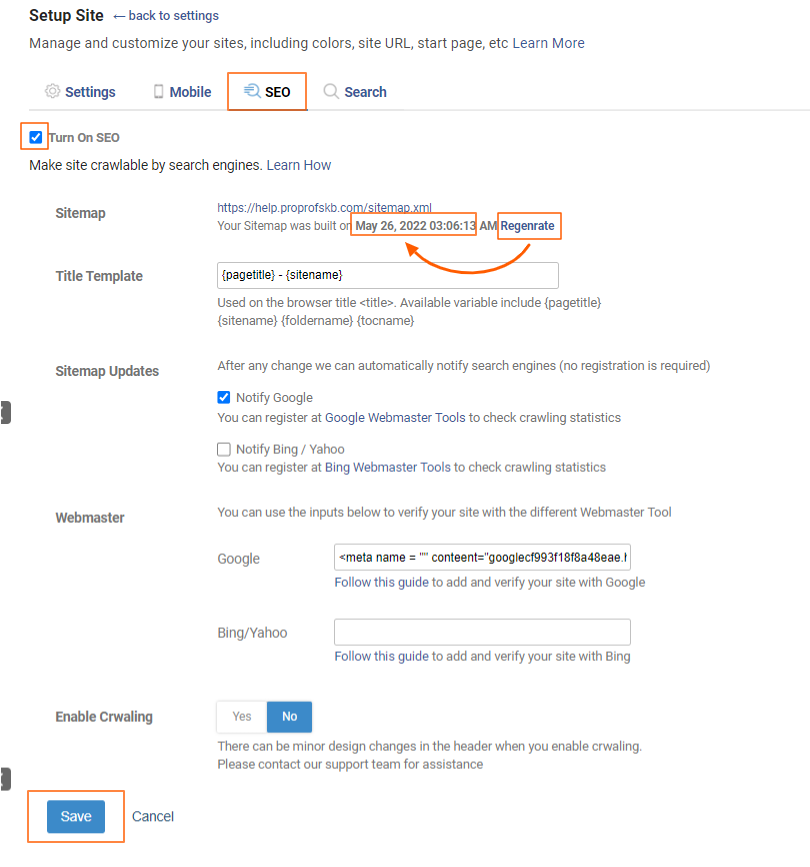A knowledge base where users get lost due to disorganized information, broken links, and outdated content becomes a source of frustration instead of empowering them with self-service.
This highlights the importance of avoiding knowledge base implementation mistakes.
A successful knowledge base implementation empowers customers to find answers quickly, reduces support costs, and enhances overall customer satisfaction.
In this blog, we’ll explore the common mistakes organizations make when implementing a knowledge base and provide practical tips to avoid them for a hassle-free experience.
What Is a Knowledge Base?
For those new to the concept, a knowledge base is a centralized repository of information that provides easy access to answers, guides, and resources related to a specific product, service, or topic. It is like a self-service library where users can find solutions to their questions, learn new things, and troubleshoot problems independently.
There are different types of knowledge bases, each serving a specific purpose. One common type is a customer-facing knowledge base, mostly used by businesses to provide self-service support to their customers.
For example, a document management software provider could use it by including troubleshooting guides and FAQs to help resolve common issues, step-by-step tutorials for new users, best practice articles for various use cases like contract management, and comprehensive API documentation for developers.
Why Do Companies Focus on Knowledge Base Implementation?
A well-implemented knowledge base can significantly impact business success due to the following reasons:
Empowers customers with self-service support
A comprehensive knowledge base provides a readily available resource where your employees and customers can find answers to their questions, troubleshoot problems, and learn about your products or services independently.
This reduces their reliance on your support team, improves customer satisfaction, and frees your agents to focus on more complex issues.
Improves employee efficiency & productivity
A knowledge base acts as a centralized repository for all critical company information, including policies, procedures, and best practices. This eliminates the time wasted searching for information scattered across emails, files, and individual drives.
Employees and customers can quickly find the answers they need, which increases productivity, speeds up onboarding, and improves product efficiency.
Helps reduce support costs
A knowledge base can significantly reduce the volume of support tickets and inquiries by empowering customers and employees with self-service support.
Fewer agents are needed to handle routine questions, and resources can be allocated more effectively, resulting in lower support costs.
Enhances content marketing & SEO
A well-structured and optimized knowledge base can attract organic traffic to your website, improve your search engine rankings, and establish your brand as a thought leader in your industry.
Creating informative and keyword-rich content can expand your reach, attract new customers, and improve brand visibility.
Fosters a knowledge-sharing culture
A knowledge base provides a platform for employees to contribute their expertise, share insights, and learn from each other.
This fosters a culture of knowledge sharing and collaboration, leading to improved communication, innovation, and a more engaged workforce.
What Are the Common Mistakes in Knowledge Base Implementation & How to Avoid Them?
For implementing an effective knowledge base, it’s crucial to avoid common pitfalls hindering its effectiveness and user adoption. Here’s a deeper dive into those mistakes:
Neglecting Content Quality
A knowledge base with poorly written, inaccurate, or outdated articles can quickly turn users away. Grammatical errors, contradictory information, or outdated instructions erode trust and create a negative impression of your brand.
Also, if your content is too technical or jargon-heavy, users may struggle to understand it, leading to frustration and a poor user experience.
Solution:
Create high-quality, well-structured articles that are easy to understand and address user needs. Use clear and concise language, avoiding jargon and technical terms whenever possible.
Use visuals like images, screenshots, and videos to enhance comprehension and break down complex topics into smaller, digestible chunks. Set up a content review process to ensure accuracy and consistency before publishing.
Overlooking User Experience
A cluttered and confusing knowledge base can be a major deterrent for users. If your knowledge base lacks a clear structure, intuitive navigation, and a user-friendly search function, users may struggle to find the information they need.
Inconsistent formatting, broken links, and a lack of visual elements can further contribute to a poor user experience, leaving users feeling lost and frustrated.
Solution:
Design a knowledge base that is easy to navigate and visually appealing. Use clear headings, subheadings, and a table of contents to guide users through the information.
Ensure your knowledge base is responsive across different devices (desktops, tablets, and mobile phones) so users can access it seamlessly regardless of their device. Set up a robust search function with features like auto-complete, search suggestions, and advanced filters to help users quickly find what they need.
Ignoring SEO

What good is a good piece of information if users can’t find it easily? Users may struggle to find your knowledge base organically if it is not optimized for search engines.
A lack of relevant keywords, poorly written meta descriptions, and unclear titles can hinder your search engine rankings, making it harder for users to discover your valuable content.
Solution:
Optimize your content for search engines by adding relevant keywords, meta descriptions, and clear titles to improve search engine rankings and attract organic traffic.
Use tools like Google Search Console to monitor your knowledge base’s performance in search results and identify areas for improvement.
Lack of Promotion
Creating a knowledge base is just the first step. If you don’t actively promote it, users may not even know it exists.
Failing to integrate your knowledge base with your website, social media channels, and other communication platforms can limit its visibility and hinder user adoption.
Solution:
Promote your knowledge base actively through various channels, including your website, social media platforms, email newsletters, and in-app notifications.
Make it easily accessible from your homepage, product pages, and support portals. Consider using banners, callouts, and in-app messages to highlight your knowledge base and encourage users to explore it.
Lack of Regular Maintenance
A knowledge base is not a “set it and forget it” project. It requires ongoing maintenance to ensure its content remains accurate, relevant, and up-to-date.
Neglecting to update your knowledge base regularly can lead to outdated information, broken links, and a decline in user trust. Failing to collect and incorporate user feedback can lead to a stagnant knowledge base that doesn’t meet evolving user needs.
Solution:
Review and update your content regularly to ensure accuracy and relevance. Establish a content update schedule and assign team members responsibilities for keeping the information fresh.
Collect user feedback through comments, ratings, or surveys and improve based on their suggestions.
Poor Search Functionality

A knowledge base with an inefficient search function is like a library without a catalog—users will struggle to find what they need.
If your search engine delivers irrelevant results, lacks advanced filtering options, or is slow and cumbersome, users may abandon their search and seek help elsewhere.
Solution:
Ensure you have a powerful knowledge base search engine that lets users quickly find the necessary information. Consider features like auto-complete, search suggestions, and advanced filters (by category, date, etc.) to enhance the search experience.
Regularly test your search functionality with different search terms to ensure it’s delivering accurate and relevant results.
Lack of Analytics & Reporting
Failing to monitor metrics like article views, search queries, and user feedback can hinder your ability to understand how your knowledge base is being used and identify areas for improvement.
This can lead to missed opportunities to optimize your content, improve user experience, and measure the impact of your knowledge base on your business goals.
Solution:
Utilize analytics to track key metrics, such as article views, search queries, and user feedback.
This data provides valuable insights into user behavior, content effectiveness, and areas for improvement. Use this data to make informed decisions about content creation, organization, and knowledge base optimization.
Not Integrating with Other Tools

A knowledge base should be an integral part of your overall business ecosystem. Failing to integrate it with other tools, such as your CRM or help desk software, can create a disjointed user experience and hinder efficiency.
Imagine a customer navigating between different platforms to find the necessary information – it creates friction and frustration.
Solution:
Explore integration options with your existing business tools to enhance the functionality of your knowledge base.
This might involve integrating with your CRM to provide personalized content recommendations or connecting with your help desk software to empower agents with quick access to relevant articles during customer interactions.
No More Knowledge Base Implementation Mistakes with the Best Knowledge Base Software
Implementing a knowledge base can significantly benefit your business, but it is crucial to avoid common pitfalls hindering its effectiveness and user adoption. You can ensure a smoother implementation process by being mindful of mistakes such as neglecting content quality, overlooking user experience, ignoring SEO, and insufficient maintenance.
Remember to prioritize user needs, create high-quality content, optimize for search engines, promote your knowledge base actively, and maintain it regularly. Addressing these critical aspects enables you to create a knowledge base that empowers your users and contributes to your business success.
ProProfs Knowledge Base can help with its intuitive interface, powerful features like AI-powered search and customizable templates, and seamless integrations, making it an ideal choice for building an effective and user-friendly knowledge base.
FREE. All Features. FOREVER!
Try our Forever FREE account with all premium features!







